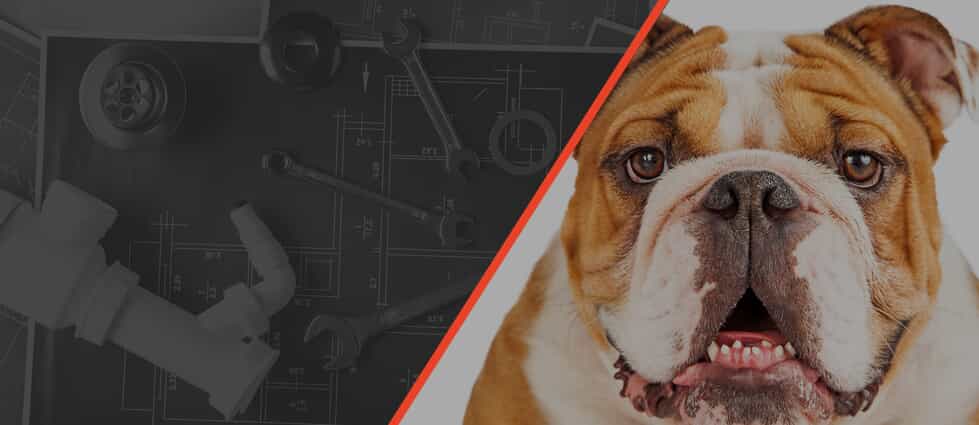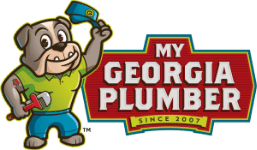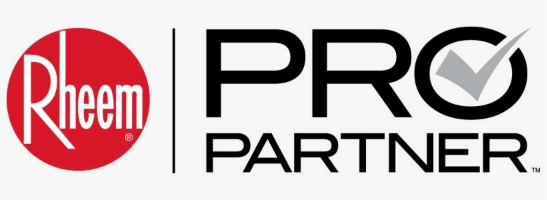
This is the continuation of a series of columns covering only the code changes that were approved as submitted from 2018 to the 2021 International Plumbing Code (IPC) change hearings. There were many code change proposals and two rounds of code hearings for the 2018 IPC. The following is a summary of the significant code changes that were approved during the International Code Council hearings in Columbus, Ohio, and Richmond, Va.
These code changes will appear in the 2021 edition of the International Plumbing Code, which will soon be published and available for jurisdictions to consider for adoption. Because it is possible for modifications to the proposed text to be made from the floor during the code hearing process and multiple code changes were made to the same code section, which will require ICC staff to develop the final text for a given code section incorporating all the changes, I recommend you refer to the 2021 IPC for the final version of any code changes reported on hereinafter.
Proposed additions are underlined and deletions are struck through. They are followed by the proponents’ published reason statements, along with any of my comments, as noted.
Code Change: IPC Section 608.15.2.1
Revise as follows:
608.15.2.1 Relief port piping.
The termination of the piping from the relief port or air gap fitting of a backflow preventer shall discharge to an approved indirect waste receptor or to the outdoors where it will not cause damage or create a nuisance. The indirect waste receptor and drainage piping shall be sized to drain the maximum discharge flow rate from the relief port as published by the backflow preventer manufacturer.
Proponent’s reason statement: It is not uncommon to find in the field a 4-inch reduced-pressure principal backflow preventer relief port discharging to a small floor drain. When the relief port opens at the full flow rate published by the manufacturer, the room where the backflow preventer is located will fill with water in a short period of time.
It is important that the indirect waste receptor and drain be properly sized to accommodate the maximum flow rate from a relief port. When multiple backflow preventers are located in the same room, the indirect waste receptor and drain only has to be sized for the largest backflow preventer. There is never an assumption of multiple relief ports opening at the same time. That would indicate a multiple failure scenario, which is not how the plumbing code evaluates failures.
The manufacturers are required to publish the flow rates through the backflow preventer relief port in their specification sheets. This information is readily available. The drain can be easily sized for the discharge in the manufacturer's published data.
My comments: The manufacturers of backflow preventer assemblies require adequate drainage for the discharge from the relief port or reduced pressure backflow preventer assemblies. This addition to the code reinforces the requirements already stated in the manufacturers’ literature for those who do not refer to the manufacturers’ literature.
Code Change: IPC Section 609.2
Revise as follows:
609.2 Water service for Group I-2, Condition 2.
Hospitals Group I-2, Condition 2 facilities shall have a minimum of two water service pipes installed in such a manner so as to minimize the potential for an interruption of the supply of water in the event of a water main or water service pipe failure. sized such that with the loss of the largest service pipe, the remaining service pipes will meet the water demand for the entire facility. Each water service shall have a shut off valve in the building and a shut off valve at the utility-provided point of connection to the water main or other source of potable water.
Proponent’s reason statement: The existing language is not specific and could lead to several different required piping configurations. The proposed change provides needed clarity to the code and provides jurisdiction a reasonable means of enforcement. Existing language creates an overly burdensome requirement for hospitals on remote sites.
The proposed language sets specific requirements for the service lines into the building, with directions for capacity redundancy. It also clarifies a design configuration that provides maximum flexibility in event of failure of a single service line.
This proposal is submitted by the ICC Committee on Healthcare. The CHC was established by the ICC board to evaluate and assess contemporary code issues relating to health-care facilities. This was a joint effort between ICC and the American Society for Healthcare Engineering, which is a subsidiary of the American Hospital Association, to eliminate duplication and conflicts in healthcare regulation.
My comments: This was a change that did not really change the requirement for two separate water services; however, it does say a minimum of two services and it now requires an isolation valve at both ends of these large service line connections to a hospital, which could be many thousands of feet long.
What this code change did not address, and should be considered by a design professional, is that a drain valve should be installed inside the building to allow draining or flushing of the piping between the two shut-off valves. This would eliminate a condition where one water service pipe is valved off for an extended period of time, allowing the water in the service pipe to go stagnant, thereby allowing the water treatment chemical to dissipate to levels that are not able to prevent bacteria growth.
Installing a drain and flushing valve with adequate drain capacity is important between the valves in the service pipe to flush this piping before returning it to service. Simply opening the two valves without flushing when the service line has been down for a significant period of time can introduce a significant number of bacteria into the distribution piping system.
Forty-plus years ago, when I first started designing plumbing systems for hospitals, it was important to not have an interruption of the water supply because older-style medical air compressors and medical vacuum pumps utilized water to create a seal. Today’s medical vacuum and air equipment designs have changed to no longer require a continuous supply of water to function properly.
Some regions or states, such as California, still require water to be stored for an emergency. Whenever water is stored, it should be in a flow-through tank so that there is not a stagnant water and bacterial growth problem that could lead to Legionella bacteria growth or growth of any other microorganism in the water.
I think it makes sense for hospitals in areas with the potential for a disaster, such as an earthquake or some other calamity that could disrupt utility services, to have a backup source of potable water to get through the immediate period until bottled water or other provisions can be established.
Code Change: IPC Section 609.2.1
Add new text as follows:
609.2.1 Tracer.
A yellow insulated copper tracer wire or a product designed for that purpose or other approved conductor shall be installed adjacent to underground non-metallic piping serving as a water service for a hospital. Access shall be provided to the tracer wire or the tracer wire shall terminate above ground at each end of the non-metallic piping. The tracer wire size shall be not less than 18 AWG and the wire insulation type shall be suitable for direct burial.
Proponent’s reason statement: It would be prudent for hospitals to have the ability to locate their water service piping when utilizing nonmetallic piping underground. This provides the ability to locate the pipe without having to excavate, which can be an enormous cost savings. Locating the service pipe is critical to eliminate the possibility of damaging the pipe, avoiding the usual methods of doing so.
My comments: While this code change is specifically limited to hospitals, it just makes common sense to apply this to any building with a plastic building water service pipe to be able to easily locate the plastic water main in the future. Engineers should consider adding this to their master specifications.
Code Change: IPC Table 702.3, Chapter 15
Note: Parts of the list in Chapter 15 and the tables in Chapter 7 that did not change are not shown.
Revise Chapter 15 Referenced Standards as follows:
D2680 - 01(2014):
Standard Specification for Acrylonitrile-Butadiene-Styrene (ABS) and Poly(Vinyl Chloride) (PVC) Composite Sewer Piping
Revise table 702.3 as follows:
TABLE 702.3: BUILDING SEWER PIPE
| MATERIAL | STANDARD |
| Acrylonitrile butadiene styrene (ABS) plastic pipe in IPS diameters, including Schedule 40, DR 22 (PS 200) and DR 24 (PS 140); with a solid, cellular core or composite wall | ASTM D2661; ASTM D2680; ASTM F628; ASTM F1488; CSA B181.1 |
For SI: 1 inch = 25.4 mm.
Proponent’s reason statement: A new standard for ABS piping is being added to increase flexibility in piping choices for building sewers. This proposal is submitted by the ICC Plumbing/Mechanical/Gas Code Action Committee.
The PMG CAC was established by the ICC board of directors to pursue opportunities to improve and enhance the international codes or portions thereof that were under the purview of the PMG CAC. In 2017, the PMG CAC held one face-to-face meeting and 11 conference call meetings. Numerous interested parties attended the committee meetings and offered their input.
My comments: This proposal is not mandating acrylonitrile butadiene styrene (ABS) piping, it is simply adding it to the list of approved materials list and table as an approved material for use as a building sewer pipe. The building sewer material should be installed in accordance with the technical literature supplied by the manufacturer of the pipe. The pipe material is often specified by the engineer based on the known conditions or application, which take into consideration the soil type or trenching conditions, etc.
The contractor can still offer any material, such as ABS, as a substitution for consideration by the engineer and the owner. He must provide sufficient evidence from the manufacturers’ technical documentation or literature confirming its equivalent performance to the specified materials in the application.
Code Change: IPC Table 702.4, 705.2.4, Chapter 15
Note: Parts of the list in Chapter 15 and the tables in Chapter 7 that did not change are not shown.
Revise Chapter 15 Referenced Standards, to add new text as follows:
A112.4.4-2017:
Plastic Push Fit Drain, Waste, and Vent (DWV) Fittings
Add new text as follows:
705.2.4 Push-fit joints.
Push-fit joints shall conform to ASME A112.4.4 and shall be installed in accordance with the manufacturer's instructions.
Revise table 702.4 as follows:
TABLE 702.4: PIPE FITTINGS
| MATERIAL | STANDARD |
| Acrylonitrile butadiene styrene (ABS) plastic pipe in IPS diameters | ASTM D2661; ASTM F628; CSA B181.1; ASME A112.4.4 |
For SI: 1 inch = 25.4 mm.
Proponent’s reason statement: Adding this section along with the consensus standard for push-fit DWV fittings will give code officials direction on inspecting push-fit fitting installations and installers direction on installing push-fit fittings.
Adding this section is consistent with the “push-fit joints" sections in chapter 6.
My comments: This proposal is not mandating push-fit joining methods, it is simply adding it to the list of approved joints and the table for pipe fitting materials. This code change is just adding push-fit drainage fittings as an option in the code.
Code Change: IPC Section 708.1, 708.1.6
Add new text as follows:
708.1.6 Cleanout equivalent.
A fixture trap or a fixture with integral trap, removable without altering concealed piping, shall be acceptable as a cleanout equivalent.
Revise text as follows:
708.1 Cleanouts required.
Cleanouts shall be provided for drainage piping in accordance with Sections 708.1.1 through 708.1.11 708.1.12.
Proponent’s reason statement: This is a companion change to the 2018 IRC subsection reintroduction of cleanout equivalents that was mistakenly left out during the reorganization of the cleanout section in the 2015 IRC. This is a viable option for cleanout equivalents in the IPC as well, which is why the addition of the language is being proposed to match the IRC language.
My comments: This code change allows fixtures such as water closets to be removed and utilized as a cleanout. This was allowed in the past and this simply reverts back to the prior code position in an effort to reduce the cost of construction by allowing a water closet to be removed and used to clean out the drain in lieu of requiring the installation of a separate cleanout fitting.
Code Change: IPC Section 717
Add new text as follows:
SECTION 717
RELINING BUILDING SEWERS AND BUILDING DRAINS
717.1 General.
This section shall govern the relining of existing building sewers and building drainage piping.
717.2 Applicability.
The relining of existing building sewer and building drainage piping shall be limited to gravity drainage piping,4 inches (102 mm) in diameter and larger. The relined piping shall be of the same nominal size as the existing piping.
717.3 Pre-installation requirements.
Prior to commencement of the relining installation, the existing piping sections to be relined shall be descaled and cleaned. After the cleaning process has occurred and water has been flushed through the system, the piping shall be inspected internally by a recorded video camera survey.
717.3.1 Pre-installation recorded video camera survey.
The video survey shall include verification of the project address location. The video shall include notations of the cleanout and fitting locations, and the approximate depth of the existing piping. The video shall also include notations of the length of piping at intervals no greater than 25 feet.
717.4 Permitting.
Prior to permit issuance, the code official shall review and evaluate the pre-installation recorded video camera survey to determine if the piping system is capable to be relined in accordance with the proposed lining system manufacturer's installation requirements and applicable referenced standards.
717.5 Prohibited applications.
Where review of the pre-installation recorded video camera survey reveals that piping systems are not installed correctly or defects exist, relining shall not be permitted. The defective portions of piping shall be exposed and repaired with pipe and fittings in accordance with this code. Defects shall include, but are not limited to, backgrade or insufficient slope, complete pipe wall deterioration or complete separations such as from tree root invasion or improper support.
717.6 Relining materials.
The relining materials shall be manufactured in compliance with applicable standards and certified as required in Section 303. Fold -and-form pipe reline materials shall be manufactured in compliance with ASTM F1504 or ASTMF1871.
717.7 Installation.
The installation of relining materials shall be performed in accordance with the manufacturer's installation instructions, applicable referenced standards and this code.
717.7.1 Material data report.
The installer shall record the data as required by the relining material manufacture and applicable standards. The recorded data shall include but is not limited to the location of the project, relining material type, amount of product installed and conditions of the installation. A copy of the data report shall be provided to the code official prior to final approval.
717.8 Post-installation recorded video camera survey.
The completed relined piping system shall be inspected internally by a recorded video camera survey after the system has been flushed and flow tested with water. The video survey shall be submitted to the code official prior to finalization of the permit. The video survey shall be reviewed and evaluated to provide verification that no defects exist. Any defects identified shall be repaired and replaced in accordance with this code.
717.9 Certification.
A certification shall be provided in writing to the code official, from the permit holder, that the relining materials have been installed in accordance with the manufacturer's installation instructions, the applicable standards and this code.
717.10 Approval.
Upon verification of compliance with the requirements of Sections 717.1 through 717.9, the code official shall approve the installation.
Proponent’s reason statement: To date, there has been limited to no code reference for all the technologies currently available to the reline piping systems. Many localities across the country are accepting it as an alternate material and method with no code guidance.
This proposal is not an endorsement of any particular method or process. It does not promote or require relining. It simply provides installation and acceptance criteria when the application is encountered. This language will provide consistent application for all materials and technologies for the industry, including the code official and installers alike.
Pipe relining technology has been successfully used for many years. It began with larger utility piping systems and has progressed into smaller piping systems that are privately owned and fall within the purview of the plumbing code. The process reduces the impact of open trench excavations and thereby reduces repair cost, according to industry data.
My comments: This code change includes language and a reference standard on relining existing building sewers and building drains. Many building sewers that have corrosion issues or leaking joints must have the building floor sawcut and removed and replaced with new pipe. This new code language gives a building owner a less expensive and less disruptive option of relining the sewer.
There are several relining options, and there are new industry standards approved for relining sewers. This code change now allows relining as an approved option to removal and replacement. The referenced standards, ASTM F1504 and F1871, in section 717.6 were already referenced in the 2018 International Residential Code. This code change was to allow slip-lining of sewers in the IPC.
Code Change: IPC Section 717 (New), Chapter 15
IPC Section 717 (new), 717.1 (new), Chapter 15
My comments: This code change proposal, as with many others code changes that added new language to the end of the code section and continued with the numbering that was published in the prior edition of the code, will have many new code change proposals submitted with the same proposed code section number.
As other proposals are submitted to a code section, they are renumbered by ICC staff in a logical order. ICC staff will renumber the code sections that get approved after the final vote on the code commentary hearings. The code language below was also numbered 717, as was the previous code change. Printed below is the code change, as it was renumbered and reworded to follow the format of the previous code language on this subject. The new code language is as follows:
The code section was renumbered and rearranged to follow the format from the previous code sections. The following text is the code language as finally edited:
SECTION 718
REHABILITATION OF BUILDING SEWERS AND BUILDING DRAINS
718.1 Cure-in-place
Sectional and Cure-in-place rehabilitation of Building Sewer piping and Sewer Service Lateral piping shall be in accordance with ASTM F2599. Main & lateral cure-in-place rehabilitation of building sewer and sewer service lateral pipe and their connections to the main sewer pipe shall be in accordance with ASTM F2561. Hydrophilic rings or gaskets in cure-in-place rehabilitation of building sewer piping and sewer service laterals shall be in accordance with ASTM F3240 to Assure water tightness and elimination of groundwater penetration.
Proponent’s reason statement: To add necessary requirements for the rehabilitation of building sewers and sewer service laterals that are currently missing from the IPC.
My comments: This code change includes language and a reference standard on cure-in-place relining of existing building sewers and sewer service lateral piping. This is a less-expensive option to installing a new sewer pipe.
There is a new industry standard approved for relining sewers with cure-in-place methods. This code change now allows relining with cure-in-place linings as an approved method when they comply with the refenced standards, ASTM F2599, F2561 and F3240.
This is a continuation of coverage on the significant plumbing code changes from the 2018 to the 2020 International Plumbing Code. Over the next few months, we will continue with the significant changes to the IPC. Following that, we will cover the significant changes to the Uniform Plumbing Code.







